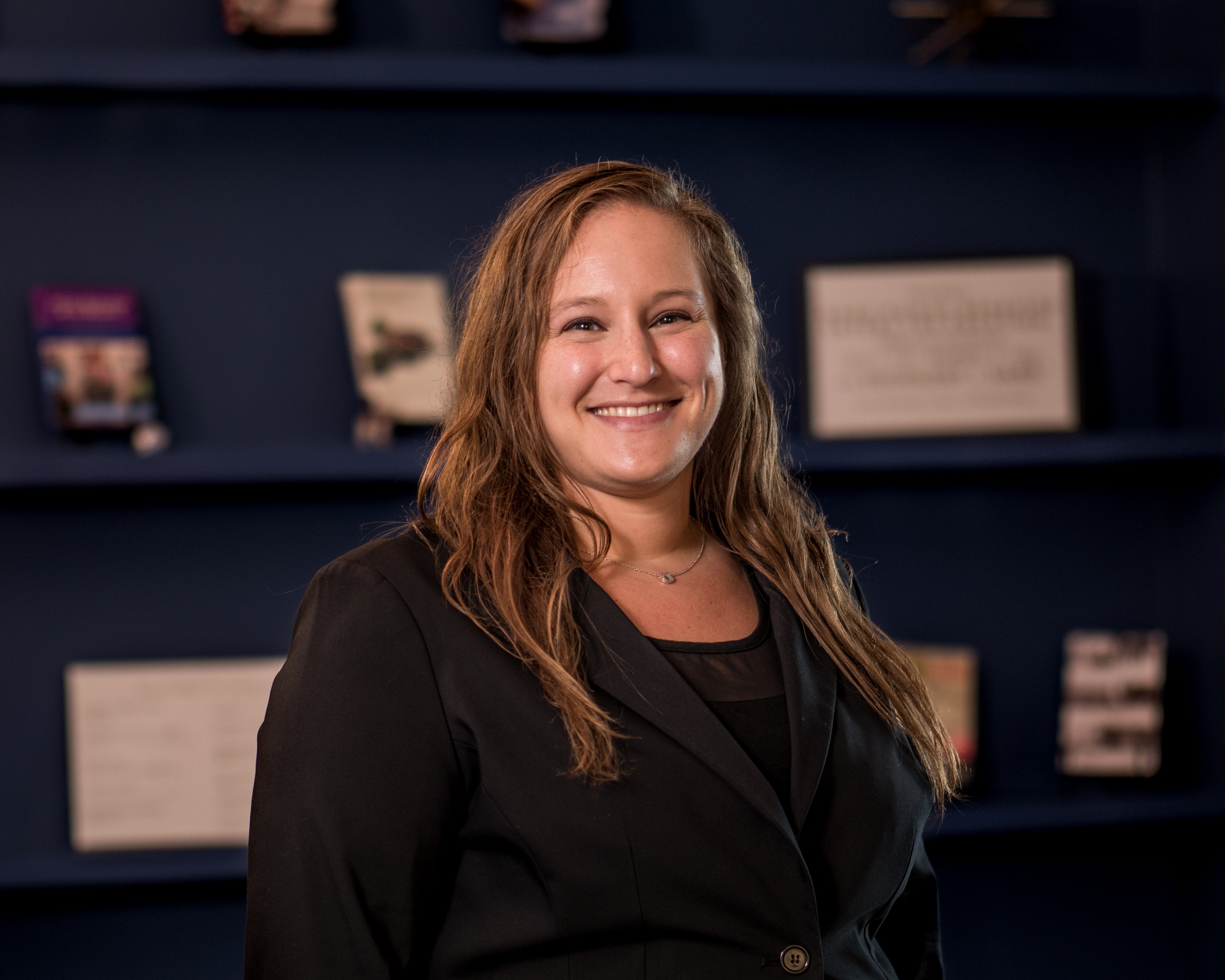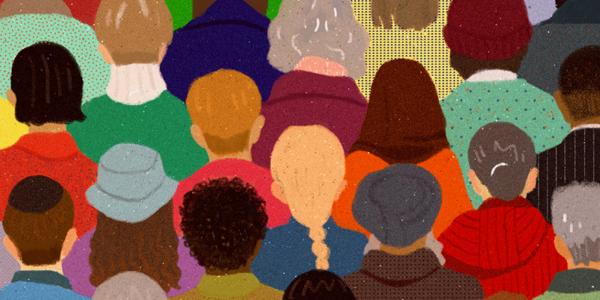Using survey data, sociologist Ariela Schachter has investigated how Americans think about race, immigration status, assimilation, and what it means to be ‘similar.’ She discusses her process and findings.
Transcript:

Claire Gauen (host): Thanks for listening to Hold That Thought. I’m Claire Gauen. Today we’ll be hearing from sociologist Ariela Schachter.
Ariela Schachter (guest): My name is Ariela Schachter, and I'm an assistant professor in the sociology department here at WashU.
CG: Schachter’s work focuses on immigration, race relations, and inequality in the United States. As part of her doctoral work at Stanford, she spent a lot of time thinking about assimilation. Assimilation is a word that gets tossed around a lot without a very clear definition, especially in recent days, when demands for a border wall and the repeal of DACA fill the news. But what does it mean to assimilate? For her project, Schachter started by reading up on how it has been defined in the past.
AS: The starting point is this idea that assimilation is "the decline of an ethnic distinction."
CG: That’s a quote from a fundamental work by two earlier sociologists. But as you can imagine, “declines in ethnic distinction” are pretty hard to measure and study. In the past sociologists have looked at things like how far you get in school, whether you have a job, and whether that job is high-paying. By making comparisons across generations, researchers can see whether immigrant families make progress in these areas over time. Schachter sees this kind of work as important, but there’s a problem – this kind of data gives a pretty narrow view of what it means to assimilate. She believes there’s more going on.
AS: To me, what's at the heart of it is how we conceptualize and relate to one another. So this idea of like, 'Are you similar to me? Do we have a lot in common?' Sort of at our core on a more social-psychological level, as opposed to, 'Did you attain the same economic status as I did?' That's one dimension of similarity, but that might not be the only way that we think about one another. I wanted to get at something more intangible that I think is really at the heart of what we think about when we think about assimilation.
"I wanted to get at something more intangible that I think is really at the heart of what we think about when we think about assimilation."
CG: Of course, there is a slight complication.
AS: It's really hard to measure intangible things about how we feel and think about one another, right? It's a lot messier.
CG: For Shachter, a solution to this mess came in the form of a survey lab.
AS: So it was a small group of about 10 graduate students across different disciplines - so sociology, political science, psychology. We were led by two professors who had previous experience running surveys. So they had a group of us, and we each got four minutes of survey time. We worked in a lab to try to figure out what was the most efficient, best way to measure what we were trying to measure - to construct our questions so they were super clear for people to understand.
CG: After many revisions, she worked with a large national polling company – the official polling partner of the New York Times, in fact – to connect her survey to a representative national sample. She ended up using 1300 interviews for her study. So, what did she ask with those 4 precious minutes?
AS: There's two main questions that I ask. First, they saw two different profiles of individuals, and these individuals varied on a number of different attributes. So their race was varied, their citizenship and immigration status was varied, their education and income, their civic engagement - so whether they'd like to volunteer a lot or not - and a couple of other dimensions. So a lot of outcomes that we tend to think of as really important to assimilation. These things were all randomized. Then, they saw these two people, and they were asked: "Who would you rather be neighbors with?" And then the second question was, "How similar are each of these people to people like you?”
CG: There’s a lot of information to dive into from just these two questions, so first, let’s look at “who would you rather be neighbors with.” When looking at one factor in these profiles – race – the findings were actually somewhat encouraging. After filtering out factors like income, education status, and English language ability, a person’s race actually didn’t have much of an effect on choosing a neighbor. So, can we declare prejudice dead? Not exactly. When you look at immigration status, the story changes drastically.
AS: Immigrant status had a huge effect, particularly for undocumented immigrants. No matter what else I said about these undocumented profiles - even when they spoke fluent English, they had a college degree, they were civically engaged, they were sort checking all the right boxes outside of legal status - undocumented, people overwhelmingly didn't want to be neighbors with undocumented immigrants.
"Immigrant status had a huge effect, particularly for undocumented immigrants ... People overwhelmingly didn't want to be neighbors with undocumented immigrants."
CG: I just want to point out again here that this data was collected before the most recent wave of anti-immigrant sentiment that our country is experiencing. For Shachter, this finding was troubling, especially the idea that even the ultimate do-gooders, community volunteers, were socially punished for their immigration status.
AS: We have over 11 million undocumented people living in United States, and many of them have been in the U.S. for more than 10 years. The fact that that legal barrier is essentially overwhelming any other efforts that they might be making to try to connect to their community, I think is really concerning.
CG: Shachter says we’re putting people in an impossible position where they’re trapped by their legal status. It seems like there’s little to do to change these people’s situations, other than the U.S. choosing to grant them legal status – something that is, at least in theory, possible.
AS: The last time that that happened was under Reagan. There was a broad legislation that allowed people to legalize their status who had already been here. But since the 80s we haven't had a similar process.
CG: Let’s turn to the second big question that participants were asked to answer when looking at these two randomly generated profiles. That question was: “how similar are each of these people to people like you?” In question #1, race didn’t play too large of a role in how people responded. Question #2, however, is a different story.
AS: Here, race is hugely important. The white respondents in my survey experiment overwhelmingly felt similar with other white profiles. There were very small effects of education status and volunteerism and these other attributes, but overwhelmingly it was race. Race is what determines how people evaluated similarity.
CG: The effect of race was not subtle here. Let’s imagine a respondent who is white, born and raised in the USA, and college educated. This respondent was likely to rate a profile showing another college-educated, native-born citizen who happened to be black as less similar than a white immigrant who spoke little English. This pattern played out with lots of different respondents.
AS: Even young, college-educated - sort of like your typical image of white liberal - still sees race as this really fundamental marker of difference.
CG: Before you get too depressed about this development in the data, consider this. We’re talking about how people view themselves in relation to others: similar, or different. But is difference necessarily bad? Are we seeing evidence of racism, or something else?
AS: I think some of it is bias, and some of it isn't. And that's one of the things that I'm working on different ways to sort of tease out in future work. So I look to see, did profiles that got rated as less similar also tend to get rejected as neighbors? And they are related. Profiles that are rated more different are also less desirable as neighbors, but they don't perfectly line up with one another. Sometimes people like neighbors who they rate as very different from them. I think that suggests that this isn't just a story about bias or racism or discrimination. I think that that's part of it, but it's not the whole thing. And I think that's one of the really interesting puzzles and challenges for assimilation scholars and immigration scholars to be thinking about. For so long, we've defined assimilation as this declining distinction - so in other words getting rid of difference. But difference isn't always a bad thing. And we haven't really grappled with what does it mean to be different but good.
"For so long, we've defined assimilation as this declining distinction - so in other words getting rid of difference. But difference isn't always a bad thing."
CG: While some of the survey results may be explained by other things, it’s still important to remember that bias likely does play a large role here. And that is especially true for undocumented immigrants.
AS: I think that one of the big findings here, or implications of the findings here, is that undocumented immigrants are facing potentially of a lot of discrimination even beyond what we've been thinking about - that whites in the United States have a really negative evaluation of undocumented people that they don't want to be around and they don't feel like they have anything in common with.
CG: Even on the personal level it’s worth thinking about: When you think about whether or not someone is assimilated into American culture, what do you mean by that? Who do you want to be your neighbor? And who do you feel is similar to you, and why?
AS: I think we don't tend to really stop and question why it is that we just sort of feel more connected to some people than others. And I think that race has a huge effect on that, even among those of us who think of ourselves as liberal people who are, you know, in our personal lives fighting racial injustice and support government policies that try to ameliorate racial inequality. It's sort of baked into the socialization of growing up in the United States, especially if you are white. Being aware of that, that doesn't mean that you're a bad or racist person, right? But that sort of has shaped how we understand one another, which is something that psychologists study and can speak a lot more eloquently about than I can. But then starting to realize like, 'OK, well if I feel a little closer to my neighbor who looks like me, do I offer them brownies. when they move in and I don't to someone else?' You know, that one little event is not very consequential, but it builds over time. Maybe then when they need help they don't think they can ask me, whereas my white neighbor feels like they can. And so starting to think about how these little pieces, these sort of little intangible ways that we think about and relate to one another can add up to have consequences, serious consequences, that we all without necessarily having any intentional racial bias are still part of how we think about things.
CG: Many thanks to Ariela Shachter for joining Hold That Thought. You can find many more ideas to explore, including several more episodes featuring the sociology faculty from Washington University in St. Louis, on our website – holdthatthought.wustl.edu.
For more information, see Ariela Schachter's 2016 article in the American Sociological Review: “From ‘Different’ to ‘Similar’: An Experimental Approach to Understanding Assimilation."
Credits:
Free Music Archive: Jared C. Balogh, Gillicuddy, Broke for Free, Jahzzar, Electric Mirrors





